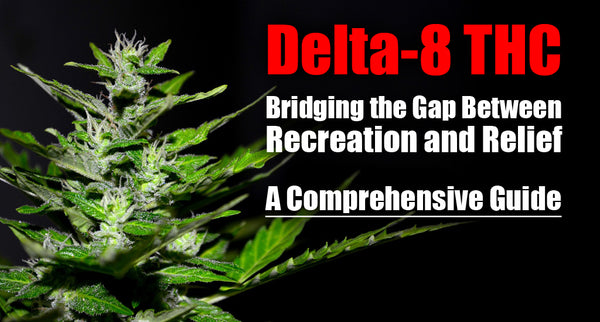
Step Four: The Flowering Stage - how to build a small grow room
how to build a small grow room - THE FLOWERING PHASE
By Ayad Maher
As we mentioned in Step three: Marijuana Vegetative Stage; the vegetative stage ends when you adjust the light cycle to 12/12 (for photosensitive strains). The flowering stage officially starts at this time; your marijuana plant will begin to produce its aromatic flower- soon to be your buds. For autoflowering varieties, this transition will happen on its own once the plant reaches a certain age. With that being the case, you can leave your lights on an 18/6 schedule for autoflowering strains if you prefer. There is not significant research that I know of to show that the greater light duration will improve yields.
The flowering stage is perhaps the most sensitive and important stage in your marijuana plant's life cycle. The conditions and overall health of your plant during this time will have a significant impact on the quality and yield of the final product.
The flowering stage can last for about 7-9 weeks for most strains out there, however, some strains, especially some of the sativas, may need more time for their buds to mature. It is not unheard of for Hazes, Diesels, and other sativa strains to flower for 12 to 14 weeks before they are ready to harvest.
Related article: Sativa or Indica? Know Your Weed! Complete Guide to Choose The Perfect Marijuana Strain for Your Lifestyle
Flowering Stage Lights
Once the right time to move the plant from a vegetative stage to flowering stage comes, your lights should be ON 12 to 14 hours a day. Again, you can control it manually or get a light timer controller, it can be expensive, but it's a peace of mind; it will help you to keep a tight and regular schedule.
Flowering Stage Lights
During the flowering stage, plants prefer “warmer,” i.e. red/orange light. Although every type of light provides at least some intensity throughout the spectrum, lights such as T5s and metal halide are better suited for vegetative growth, while high pressure sodium is better suited for flowering. LEDs can be used for both vegetative and flowering, but make sure to do your research; not all LEDs provide great intensity at certain areas of the spectrum. This will vary from manufacturer to manufacturer.
Flowering Stage Temperature and Humidity
During the time your plant is exposed to light, you should set your temperature between 71°F and 77°F. Generally, flowering plants prefer lower temperature and relative humidity than vegetative plants or seedlings and clones.
Related article: Cannabis Grow Room Control Explained in Plain English
When the lights are out, temperature is generally about 10-15°F cooler than the lights-on temperature. This temperature drop will help the plant to go through its normal life cycle process. This change in temperature mimics a similar phenomenon in nature, where the flowering seasons introduces cooler temperatures at night as fall/winter approach.
Stretch Phase
In the first couple of weeks of the flowering stage, and before your plants display anything resembling buds, they will be transitioning from the vegetative stage to the flowering stage. During this time, most strains will experience what is known as “stretching.” Stretching is when the space between nodes increases. New nodes should no longer be forming; instead, the nodes that are already grown will move further apart from one another.
Some strains will stretch an enormous amount, especially sativas and sativa-dominant hybrids. It would not be unreasonable to anticipate stretching to anywhere from 50% to 200% of the plant’s original size, varying by strain. This is an important consideration when choosing genetics. If your grow space is restricted in height, sativas and hybrids may be risky choices, as the stretch may result in your plants burning, bleaching, or otherwise becoming stressed as they grow too close to the light source.
As your marijuana plant starts stretching and getting bigger, it's recommended to bend the stems down and away from the center of the plant (see the video below). This practice, mentioned in part three, is called Low Stress Training (LST); it will help by providing even light distribution to the plant, and improves the efficiency of your grow lights, ultimately raising your yield without any input of resources.
Nutrients for Flowering Stage
With the transition to the 12/12 light cycle, you should begin to adjust your nutrient solution for the flowering phase. There are a number of ways to adjust your feeding schedule, but the best method is always to start out by following the nutrient manufacturer’s instructions. These instructions typically have you gradually reduce the concentrations of the vegetative solutions, while increasing concentrations of the flowering solutions.
You may also perform a “flush,” where you feed the plants without any nutrients, or with only a special flushing solution (but still check the pH of the water and adjust it to the correct range). Some manufacturers will recommend this as part of the adjustment to the feeding schedule.
Related article: Top 7 Online Stores for Marijuana Growing Supplies and Equipment
You may also refer to the soil you used, and check its feeding manufacturer’s schedule (we decided to go with FoxFarm Ocean Potting Soil, remember!).
For beginner marijuana growers, Liquid Nutrient Trio Hydroponic Formula is a safe bet.
Post-stretching Phase
As the stretching phase ends, your marijuana plant will start to produce calyces (if female), which have long white pistils (typically, but some strains display other vibrant colors) growing from their tips. If your plant happens to be male, you will see tiny pollen sacs instead of calyces. We will cover this in greater detail later. This growth indicates that the plant is beginning to use all of its available energy on flower production. For the next part of the plant’s life, our goal will be to increase the availability of energy and nutrients in order to produce enormous buds.
As you start to notice these first signs of real flowers developing, you may not see many trichomes (Resin Glands) on your plants, which means the smell won't be as strong. Strains with greater cannabinoid (THC, CBD, etc.) content may produce trichomes earlier in the flowering phase, or at a generally greater rate than their lower cannabinoid content counterparts.
Male vs. Female
If you weren't sure of the sex of your plant, now is the time to determine the sex, and if necessary, separate and/or cull them. In the first week or two after moving the plant from the vegetative stage to the flowering stage, you will start spotting the first white pistils (the female organs of a flower) growing on your marijuana female plants, which will ultimately become the buds. On the other hand, if you had a marijuana male plant, you will see instead a small pollen sac.
If you're growing your weed for the buds, and you don't care about producing seeds and breeding your own strains (most new growers don’t), culling the male plants is crucial! If they are not noticed and removed early, they can begin to pollinate your females, resulting in lower yields of seedy bud, or in severe cases, no yield at all.
The male plant is, however, necessary if you wish to cross strains and produce your own seeds. If you just want the flower and no seeds, cull your males. If you want to eventually pollinate a female and collect seeds, separate your male plants ASAP, and allow them to continue flowering until the pollen sacs are ripe.
Related article: If you want to start growing the seeds too, here is what you need to do: Cannabis Seeds 101: How To Produce Your Own Seeds.

Keep an Eye on Any Potential Deficiencies
As your plants start growing and developing more leaves and flowers, it may also develop potential shortfalls, such as discoloration, twisting, dried, or wrinkled leaves, loss of leaves entirely, or nutrient burn (signs of overfeeding).
"Nutrient burn" is an important and very common problem a beginner marijuana grower may face. It's when the marijuana plant was exposed to high level of nutrients, which eventually accumulate in the tips of the marijuana leaves and turn them into yellow or brown. If this happens, simply cut down on nutrients feeding.
The most common nutrient supplied in excess, to a level of toxicity, is nitrogen. This is a common issue because the plant requires significantly more nitrogen in the vegetative phase. As growers adjust their feeding solution through the vegetative-flowering transition, the nitrogen concentration may decrease too gradually for the plant’s liking. This is why some growers and nutrient manufacturers recommend a flush between phases: a flush will help to decrease nutrient concentrations in the soil, allowing for a “cleaner slate” as you introduce a different nutrient solution following the flush.
As a rule of thumb, if you see symptoms of any sort of nutrient toxicity, it is wise to flush, or at least decrease nutrient concentrations in the following feed. Do note that some discoloration is natural, and of course, strain-dependent. Deficiencies and toxicities tend to be distinguishable from natural discoloration due to their patterns or locations on the plant or leaf.
Last Few Weeks before The Harvest
Around week 4, the plant will keep producing more trichomes, and the smell will become much more noticeable. This is when your plants will begin to look “sugary” or “frosty,” while the buds continue to grow in size.
During week 5, you will start noticing new buds growing, however, many of the older buds have become more mature and thicker, making the whole plant a lot heavier. It's a sign that your plant is in full flowering mode. Keep in mind, in case you want to keep your cannabis growing hobby discrete, the plant will have a strong and very noticeable odor. If you prepared your grow room with a carbon filter and sufficient ventilation, the smell should not be much of an issue (disclaimer, as always, that this is strain-dependent).
Related article: Controlling Smells & Odors in The Grow Room.
You will also notice the pistil hairs may turn into darker (brown, orange, amber, or sometimes other) color. Furthermore, you will spot some of the trichomes becoming dim (milky white, rather bright). Both signs that you are not too far from harvesting your buds.
Flushing Out Your Cannabis Plants Before Harvest
Flushing is not only useful for phase transitions and nutrient issues, but is recommended leading up to harvest. It is believed that flushing the plant shortly before harvest will result in fewer nutrients in the buds, which may help the plant express its unique aromas and flavors. It is also believed that buds that crackle when smoked do so because of nutrients in the buds, which were not flushed. However, there is also some consensus among growers claiming that not flushing results in a slightly larger yield.
Ultimately, it’s your choice as to whether you should flush prior to harvest or not. Personally, I flush my plants for the last 1-2 weeks leading up to harvest as I believe strongly in the claim that aromas and flavors develop significantly as a result of flushing.
Be aware that even when flushing the plants, you should still flush with and continue to water with pH balanced water.
How to Tell If Your Plant Is Ready to Harvest?
At this time, you should be using a jeweler’s loupe or digital microscope to get a closer look at the trichomes. Determining the correct time to yield is difficult for new growers, and harvesting before, during, or after the optimal window will have significant impact on the final product. Looking at the trichomes with sufficient magnification is the best way, hands down, to determine the time to harvest in order to meet your needs.
An “early” or “late” harvest generally refers to the condition of the trichomes. Immature trichomes have not had sufficient time to produce their cannabinoids; thus, an early harvest results in an impotent product. Mature trichomes have had sufficient time to produce cannabinoids, however, if they are given too much time to ripen, the cannabinoids begin to degrade, resulting in a different distribution of cannabinoids, i.e. THC, CBD, and others in the final product.
Most personal growers are looking for one of two things: high THC, or high CBD content. Medical growers, especially, may be interested in high-CBD, low-THC strains, which are becoming more and more common in decriminalized regions. Although more peer-reviewed research needs to be conducted to found these claims, it is generally believed that CBD and THC content within the trichomes is greatest when the trichomes are “milky” in appearance.
As trichomes age, their appearance changes from “clear” or “glassy,” to “milky” or “opaque,” to “amber,” or other darker browns and reds. The milky appearance of a given trichome will occur after the glassy appearance, and before the amber appearance. Trichomes do not all age at the same rate, and since they are continuously produced through the plants life, you may see glassy, milky, and amber all in the same area of the plant as you approach harvest.
As you can imagine, it is both difficult, and largely at the grower’s discretion, to choose the time to harvest. General consensus would have you harvesting around 8-10 weeks out for the majority of strains, which is when you will see the greatest abundance of mature, milky trichomes, with perhaps 10-15% amber, and relatively few glassy trichomes around.
Take note that the trichomes on the buds are the ones you should look at to determine harvest time; trichomes on the sugar leaves of the plant will mature at a much greater rate, and will be trimmed instead of smoked, regardless.
Related article: Top Reasons Why Should Cannabis Growers Pay Close Attention To Weed Pistils?
Here is our complete Step by Step Beginners Guide to grow marijuana Indoors
- Step One: Choose the right strain/seeds. Here are the Best Marijuana Seed Banks
- Step Two: How to Build the Perfect Indoor Grow Room (For up to 6 Plants)
- Step Three: Germinating Your Marijuana Seeds and The Seedling Stage
- Step Four: Marijuana Vegetative Stage
- Step Five: Flowering Stage
- Step Six: Harvesting and Drying
- Step Seven: Curing and Trimming
About the authors
Andrew Gordon is from the northeast USA, currently resides in Vermont with his wife, and has over 5 years of experience with cannabis cultivation. General interests include cultivation, extractions, skiing, reading books and playing video games. Professional experience includes mostly laboratory work in biotech. For any questions, you can reach to Andrew through his email: kib1220@gmail.com.
Ayad Maher is a Cannabis Industry Entrepreneur, Blogger & Activist. eCommerce Specialist and Owner of a 420 Life Style Website; Monroe Blvd, an online smoke shop; 421Store, and an online CBD store; GoodyCBD.
Editor's Note: This post was originally published in Jan 2018 and has been revamped and updated as needed for accuracy and comprehensiveness.





